
Save at the grocery store
I’m always looking for ways Canadians can keep more money in their pockets at the grocery store checkout, while still getting the most nutritious foods. And guess what? Beyond clipping coupons and scouring the store flyers for specials-which are both musts-there are lots of other cost-saving strategies you can use on your next trip to the grocery store.

1. Look at the price per unit
When comparing similar items among brands and sizes, look at more than just the price. To find the true cost, check the price per unit (per 100 grams or 100 mL), which is usually in tiny print below the main price on the label affixed to the shelf; a bigger package or another brand may end up being cheaper. (Bring a calculator along to figure that out.) And if you are single or part of a small family, you can still purchase in large quantities for big savings -join forces with your neighbours or friends to divvy up and share the cost of perishable items such as meats and fruit and vegetables.
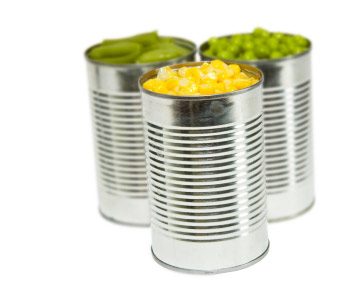
2. Try the non-branded items
Store-label or no-name brands of everything from pasta sauce to frozen vegetables are often cheaper than well-marketed national brands. Are they inferior? Not necessarily. In fact, sometimes they’re the same product: Many grocery companies will buy branded products and simply slap on their own label. Read ingredient lists of any product to make sure you aren’t sacrificing nutrition for lower costs.
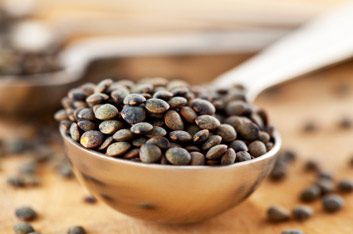
3. Swap some meat for other proteins
Try inexpensive protein sources such as lentils, beans, eggs and tofu in place of some meat choices. Beans and lentils are low in calories and high in fibre, protein, iron and many other nutrients including folate, meaning they’re a great meat substitute, says Calgary-based registered dietitian Sarah Remmer. At the national food store where I shop, for example, dried bulk lentils are ridiculously cheap at just 25 cents per 100 grams; tofu costs 42 cents per 100 grams. The same amount of lean ground beef costs 70 cents per 100 grams. And at roughly 25 cents per serving, protein-packed eggs remain a bargain for breakfast, lunch or dinner.
Related:
• 5 reasons to eat more eggs
• Our best healthy bean and lentil recipes

4. Go for cheaper chicken
“Boxed, frozen seasoned chicken breasts are expensive and often loaded with sodium,” says Remmer. Instead, save big by selecting drumsticks, thighs and legs in the meat section. Contrary to popular belief, these flavourful options have only one more gram of saturated fat per serving than breast meat, and they’re nutritious as long as you choose skinless or remove the skin after cooking. Whole raw chicken is the cheapest choice, at more than a dollar less than breasts per 100 grams. Roast it and use as needed for stir-fries, soups and salads. Use the bones to make chicken broth.
Related:
• Our best healthy chicken recipes
• Roast Herb and Garlic Chicken
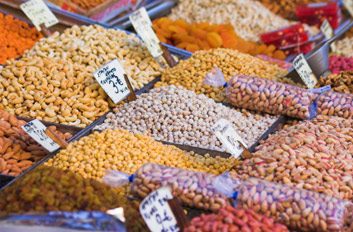
5. Buy in bulk
Bulk bins offer the best bargains on staples such as rice, spices, flour, dried fruit, nuts, sugar, cereal and pasta. Plus, if a recipe calls for just a small amount of mustard powder or pine nuts, for example, you are spared spending more on larger packaged amounts that may just sit in your pantry forever. And remember inexpensive milk powder? Consider using it in soups, casseroles, mashed potatoes and desserts instead of using regular milk.
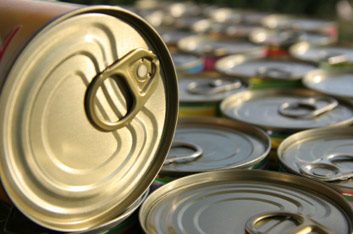
6. Don’t ignore canned fish
Salmon, tuna and other canned seafood are as nutritious (containing plenty of omega-3s and protein) as fillets or steaks, but with a much lower price tag. And if you consume the softened bones found in tinned pink and sockeye salmon, you get boatloads of bone-building calcium. Beyond sandwiches, you can use canned fish in casseroles, or try salmon or tuna burgers for a cheap, healthy dinner. Save up to $1.50 per can by opting for chunk light tuna over solid white tuna, which has been shown to contain higher mercury levels.
Related:
• 5 healthy canned tuna recipes
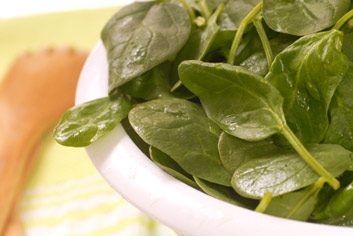
7. Do your own food prep
You can really slash your grocery bill by chopping your fruit, shredding your cheese, slicing your bread, shelling your shrimp, peeling your carrots, de-boning your chicken and washing your spinach. For example, peeled baby carrots in a bag cost $3.40 for 340 grams, while unpeeled loose carrots cost 52 cents for 340 grams. Also, choose applesauce, yogurt, oatmeal and fruit juices in larger packages instead of individual servings. You’ll save even more per unit-and cut down on the amount of waste that ends up in landfills. It only takes a moment to transfer smaller serving sizes as you need them into zip-lock bags, cups or reusable containers for portable lunches or snacks.
And the savings can be huge if you make your own salads, trail mix, stir-fry sauces, salad dressings, diced tomatoes and drinks. For example, you could pay $2.19 for two litres of bottled ice tea-or just 70 cents to make that amount from tea bags with freshly squeezed lemon juice. Plus, you can use less sugar than what is added to most store-bought versions.
Related:
• 20 healthy salad recipes

8. Raid the discount bin
On the quick-sale fruit and vegetable rack, produce is often marked down to half-price. True, those bananas, broccoli, berries or bell peppers might not be 100 percent fresh and appealing, but they will still boost your nutrition. Purée overripe fruit such as bananas, peaches and cantaloupe, then freeze in ice cube trays. When a smoothie craving strikes, combine four or five fruit ice cubes with low-fat milk and yogurt in a blender for a quick and nutritious breakfast or snack. Priced-to-clear veggies can find new life in puréed soups, or can be chopped and frozen for later use in homemade stock.

9. Choose in-season or frozen
Fresh fruits and vegetables are never more delicious and easy on the wallet than when they’re in season. More grocers are stocking local seasonal produce at bargain prices. Freeze extra for winter or take a look at the freezer section for friendly prices on out-of-season produce. “Frozen produce is harvested at peak ripeness and quickly frozen to maintain flavour and nutrients,” says Remmer. But make sure that you avoid frozen produce with added unhealthy sauces and syrups.
How do you keep your food budget low? Share your tips in the comments.
Related:
• 6 reasons to eat more beans and lentils
• Quiz: What kind of eater are you?
• What healthy people really eat
